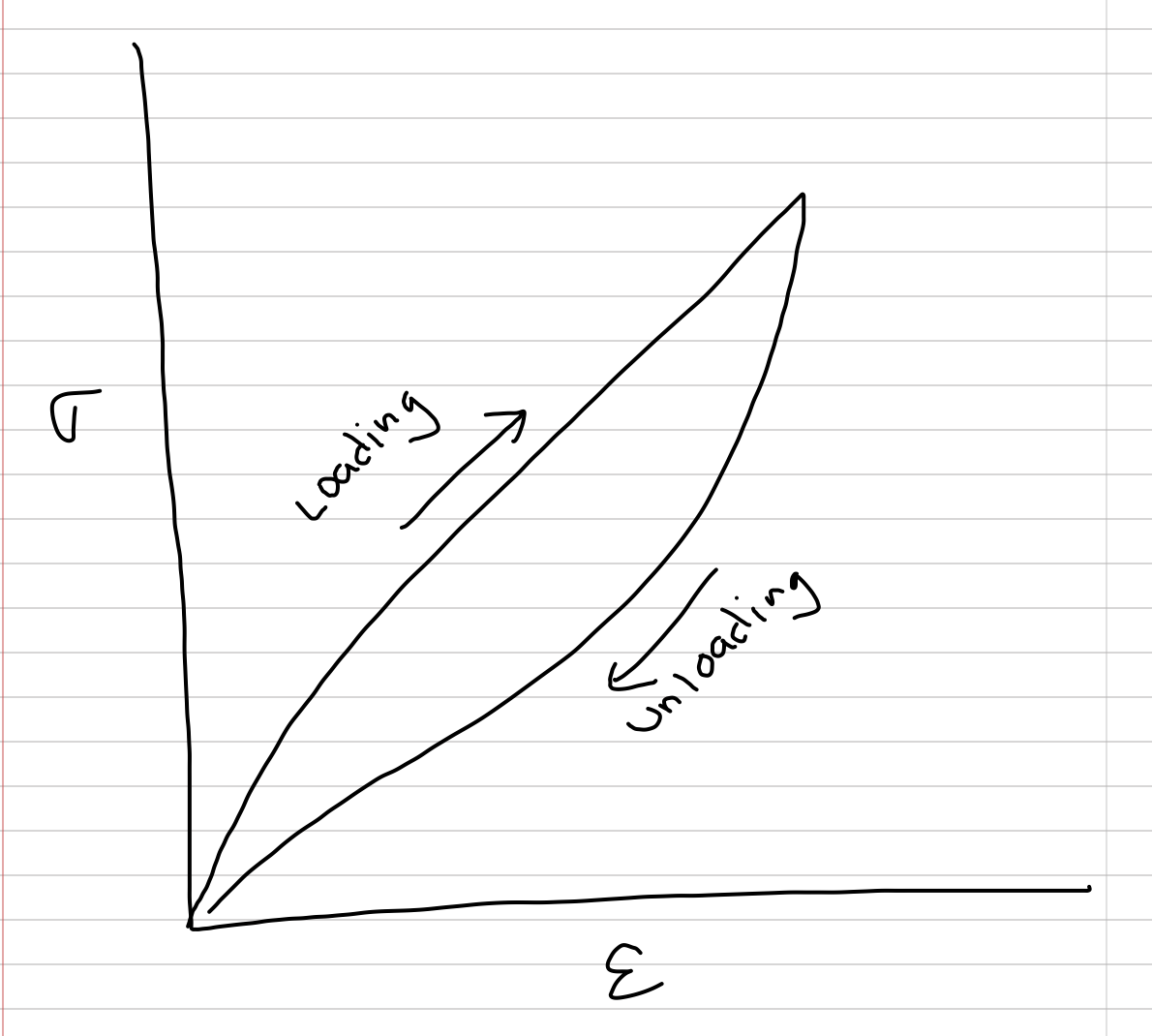2.6 Stored strain energy can do work
 Figure 2.10: The loading curve is the behavior while a material is being deformed by some load. The unloading curve is the behavior when the load is removed.
Figure 2.10: The loading curve is the behavior while a material is being deformed by some load. The unloading curve is the behavior when the load is removed.
If the external load is removed, the stored strain energy does work on the surrounding material, moving the atoms back toward their starting arrangement. In an elastic material, which includes most biological materials that aren’t fluid, the starting length is completely recovered. If the surrounding material includes an another object, some of the stored energy is transferred into that object, typically as kinetic energy (if the object is put into motion). This storage and release of elastic strain energy has profound implications for both human engineering and for animal function. For human-engineering, think of sling-shot. Energy from moving limbs is transferred into the rubber material of the sling as strain energy. The strain energy is used to return the sling to its starting length and the energy of this return motion is used to shoot a rock. Animal bodies are full of structures that store and release elastic strain energy. For example, during lung ventilation in mammals, our thorax cycles between inspiration (the inhale) and expiration (the exhale). Contraction of the diaphragm muscle powers inspiration: the diaphragm contracts, the thoracic volume increases, which depresses alveolar air pressure, which sucks air into the alveoli through an open mouth and nose. The expanded thoracic wall and lung itself store elastic strain energy. When the diaphragm relaxes, this stored strain energy powers expiration. The total energetic cost of ventilation is markedly reduced because of the ability of thoracic tissues to store and release elastic strain energy.